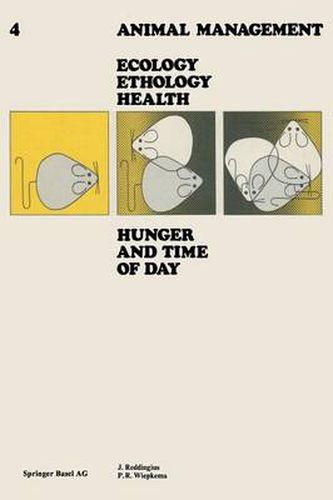Readings Newsletter
Become a Readings Member to make your shopping experience even easier.
Sign in or sign up for free!
You’re not far away from qualifying for FREE standard shipping within Australia
You’ve qualified for FREE standard shipping within Australia
The cart is loading…






This title is printed to order. This book may have been self-published. If so, we cannot guarantee the quality of the content. In the main most books will have gone through the editing process however some may not. We therefore suggest that you be aware of this before ordering this book. If in doubt check either the author or publisher’s details as we are unable to accept any returns unless they are faulty. Please contact us if you have any questions.
In constructing models for the explanation and prediction of feeding behaviour, it has been attempted to define the state of the animal in terms of caloric defi- cit and amount of time spent eating already. These models of feeding behavior contain a negative feedback loop (caloric deficit induces feeding, which reduces deficit and increases satiation, which in turn checkes feeding) and a positive feedback loop (eating, once started, tends to persist). But it is not yet clear how the day-night rhythmicity which animal behavio are known to possess, should be incorporated in a model. In order to make progress, data on the rhythmicity of feeding behavior, and the interplay between caloric deficit and time of day, are needed. A survey of important data from the literature concerning feeding rhythms in rats and mice is given. Different methods for measuring food intake and/or behavior closely related to feeding as a function of time have been used; each of these methods suffers from serious drawbacks. In general, these animals eat more during the dark period of the day than during the light period. With rats, very often two maxima occur, one just after the onset of dark, and another just before the onset of light. Meals taken during the light period by rats appear to be smaller on the average than during the dark period, and the reverse holds for pauses between meals.
$9.00 standard shipping within Australia
FREE standard shipping within Australia for orders over $100.00
Express & International shipping calculated at checkout
This title is printed to order. This book may have been self-published. If so, we cannot guarantee the quality of the content. In the main most books will have gone through the editing process however some may not. We therefore suggest that you be aware of this before ordering this book. If in doubt check either the author or publisher’s details as we are unable to accept any returns unless they are faulty. Please contact us if you have any questions.
In constructing models for the explanation and prediction of feeding behaviour, it has been attempted to define the state of the animal in terms of caloric defi- cit and amount of time spent eating already. These models of feeding behavior contain a negative feedback loop (caloric deficit induces feeding, which reduces deficit and increases satiation, which in turn checkes feeding) and a positive feedback loop (eating, once started, tends to persist). But it is not yet clear how the day-night rhythmicity which animal behavio are known to possess, should be incorporated in a model. In order to make progress, data on the rhythmicity of feeding behavior, and the interplay between caloric deficit and time of day, are needed. A survey of important data from the literature concerning feeding rhythms in rats and mice is given. Different methods for measuring food intake and/or behavior closely related to feeding as a function of time have been used; each of these methods suffers from serious drawbacks. In general, these animals eat more during the dark period of the day than during the light period. With rats, very often two maxima occur, one just after the onset of dark, and another just before the onset of light. Meals taken during the light period by rats appear to be smaller on the average than during the dark period, and the reverse holds for pauses between meals.